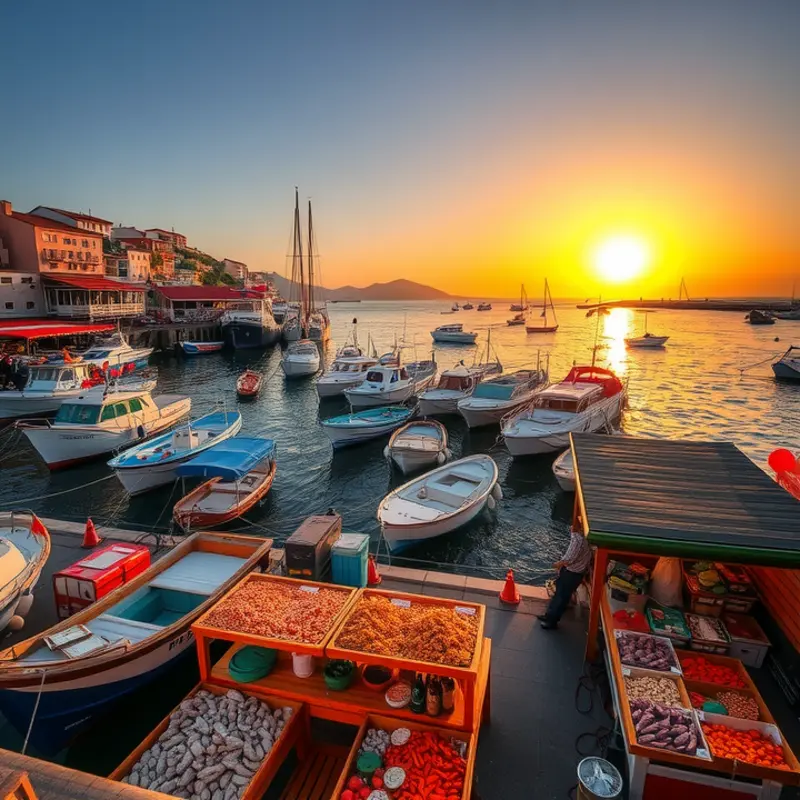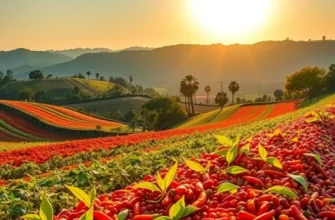The world’s oceans offer an abundance of seafood, each region infusing its culinary identity into the ways these treasures from the deep are prepared and consumed. Seafood isn’t just food; it’s intertwined with culture, tradition, and community, with rituals that vary from the solemn to the joyous. This exploration invites food enthusiasts and the culturally curious to dive deep into the fascinating rituals surrounding seafood across various cultures.
The Sacred Salmon: Japan’s Ikigai

Salmon holds a revered place in Japanese culture, symbolizing the deep connection between nature and spirituality. Traditionally, salmon appears in the rituals of Shinto, Japan’s indigenous faith, with ceremonies aimed at ensuring bountiful harvests and prosperous fishing. In these ancient rites, salmon is offered to Kami, the divine spirits, as a token of gratitude and respect.
The connection between salmon and spirituality extends to seasonal festivals, where this fish embodies renewal and abundance. During events like the Hōnen Matsuri, communities come together to express thanks for nature’s generosity, feasting on salmon prepared in age-old methods. These gatherings emphasize harmony and the cyclic nature of life.
Beyond its spiritual significance, salmon is celebrated in Japanese cuisine, particularly in sushi. This culinary art form transforms raw fish into elegant dishes, emphasizing minimalism and clarity. Sushi chefs treat salmon with the utmost respect, following precise techniques to honor its natural flavors and textures. This respect is an expression of ikigai, the Japanese concept of a “reason for being,” where passion, vocation, and mission converge.
In modern Japan, salmon’s prominence in sushi reflects contemporary shifts in culinary practices while maintaining a connection with ancestry. The evolution of sushi showcases adaptability, balancing era-old traditions with new influences. By savoring salmon sashimi or nigiri, individuals partake in a ritual that connects them to past generations and their enduring values.
Communal feasting forms another facet of salmon’s cultural tapestry in Japan. Families and friends often gather around hot pots or barbecue grills to enjoy salmon in winter. This tradition goes beyond mere consumption, fostering community and reinforcing bonds. Such gatherings echo the teachings of ikigai, whereby fulfillment arises from shared experiences and genuine relationships.
Paying homage to salmon in these multifaceted ways reaffirms its role beyond nourishment. It represents the fusion of people, culture, and environment. By understanding the dynamics of Japanese culinary rituals surrounding salmon, we might also reflect on our own gastronomic practices. Beyond the kitchen, these practices resonate with the broader themes of sustainability and mindful eating. For those interested in conscious kitchen practices and understanding flavors deeply, exploring resources like these flavor boosters without salt might offer valuable insights.
Through the elemental presence of salmon in rituals, cuisine, and community, Japan illustrates the profound art of finding one’s purpose. This purpose, subtly woven into the fabric of daily life, enriches the spirit and nourishes the soul, leaving a legacy that intertwines history, culture, and identity.
Feasting on Freshness: The Mediterranean Approach

In the sun-drenched Mediterranean, seafood is not just a meal; it’s a way of life. Coastal towns, with their vibrant markets and bustling tavernas, form the backdrop to an oceanic feast. Here, the catch of the day drives the culinary narrative, transforming into dishes that speak to both simplicity and depth.
In Greece, the daily catch might mean grilled octopus, lovingly charred over an open flame. Rich in flavor, every bite recalls the saltiness of the Aegean Sea. In Italy, frutti di mare pasta showcases shrimp, mussels, and calamari in a symphony of flavors, served al dente in creamy sauces or simple olive oil and garlic. Even the smallest anchovies find their glory, marinated and served as tapas in Spain or blended into sauces elsewhere.
Visit any Mediterranean market, and you’ll be greeted with a kaleidoscope of colors and aromas. Fishermen deliver their fresh haul at dawn, soon to be displayed prominently on ice. Local vendors proudly sell their seafood, ready to guide shoppers in their selections or offer suggestions on preparation. These markets are more than transactional spaces; they act as social hubs where recipes are exchanged as eagerly as greetings. For those looking to bring a taste of the Mediterranean home, exploring these markets can offer insight on how to create robust flavors without relying on salt. Discover tips on enhancing meals with minimal sodium here.
Festivals such as Italy’s ‘La Notte della Taranta’ further illustrate how deeply seafood is woven into cultural fabric. These communal gatherings celebrate music, dance, and, crucially, food. Local dishes highlight regional distinctions but share a foundation of fresh seafood. Consider Spain’s vibrant paella, cooked in massive pans during such festivals, featuring rice simmered to perfection with shellfish. Its flavors are deeply influenced by the saffron and an array of seafood, reflecting centuries of culinary evolution. Meanwhile, Portugal’s caldeirada, a fish stew, combines various types of seafood with potatoes and spices, illustrating a rustic tradition that has stood the test of time.
The Mediterranean approach is about more than just fish or shellfish; it’s a philosophy that integrates freshness with social and cultural expression. While other regions may offer complex sauces or exotic spices, the Mediterranean emphasizes eating what is local and seasonal. This ensures not only the freshness of ingredients but also sustainability and respect for natural resources. So, while the simple grilled fish or a hearty seafood stew might seem unpretentious, their richness lies in the depth of tradition and the joy of community sharing.
Joining such a feast means indulging in the purity of flavors and the warmth of community, both cornerstones of this storied region’s culinary identity.
Final words
The culinary rituals surrounding seafood highlight the deep appreciation and respect various cultures hold for the ocean’s offerings. Whether it’s through spiritual connections, symbolic meals, or communal gatherings, these rituals serve as a testament to the human connection with nature. By savoring seafood, people not only nourish their bodies but also pay homage to their history, their environment, and their shared experiences. The world of seafood is vast, and the traditions that surround it enrich our understanding of diverse cultures, inviting us to celebrate this treasure from the sea.








